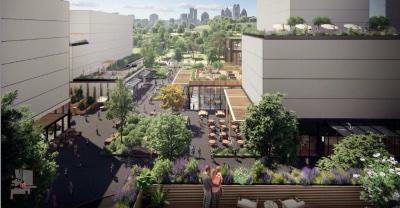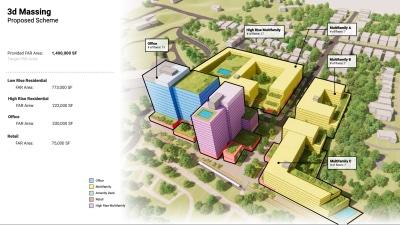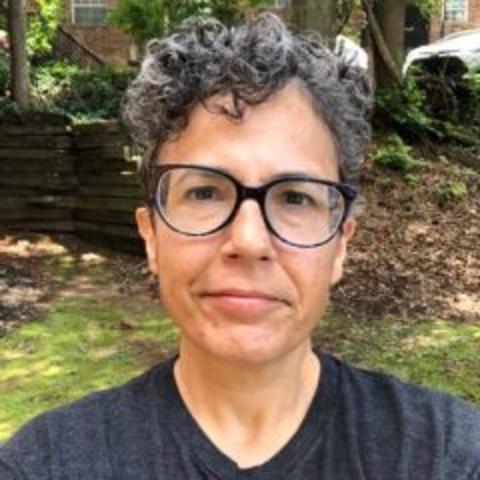
Section Branding
Header Content
Tensions mount in Atlanta neighborhoods over Portman’s planned redevelopment of Amsterdam Walk
Primary Content
Atlanta-based Portman Holdings’ plans to transform Amsterdam Walk from a warehouse district into a large mixed-use development is stirring up heated debates among those living in the surrounding neighborhoods.
Portman views the roughly 10-acre property off Monroe Drive and nestled between the affluent Morningside/Lenox and Virginia-Highland neighborhoods as the ideal spot for a destination mixed-use project because its adjacent to the Atlanta BeltLine, Piedmont Park, and Atlanta Botanical Garden.
The developer wants to raze the existing buildings, mostly modified warehouses filled with local businesses, to build 900 apartments and just under 500,000 square feet of retail and office spaces. The plan also includes 1,400 parking spaces.
But many living in Virginia-Highland and Morningside/Lenox have said the high-density project, including two high-rise towers — a 17-story apartment building and a 13-story office building — would destroy the character of their single-family neighborhoods by increasing traffic, noise, and pollution.
A Portman traffic study estimates the project would add nearly 4,000 daily new car trips.
“That’s like having a festival every single day,” said one person at a Jan. 31 neighborhood meeting to a round of applause.
“We’re much more like Inman Park than Midtown,” said another, also to applause.
The meeting was hosted by the Morningside Lenox Park Association and the Virginia-Highland Civic Association and held at the Red Light Cafe in Amsterdam Walk. About 100 people attended, including Atlanta City Councilmembers Alex Wan and Matt Westmoreland and newly elected Atlanta Board of Education member Ken Zeff.
No one from Portman was present.

Amsterdam Walk, while located between two established single-family neighborhoods, is zoned C-1 (commercial), said Aaron Fortner of Canvas Planning Group, a planning consulting agency for neighborhoods.
The existing zoning allows for about 750,000 square feet of non-residential use and more than 300,000 square feet of residential, for a total of more than 1 million square feet of new development, he said. There are also no height limits, he said.
Portman has applied to rezone the property from commercial to a planned development—mixed use district. This zoning allows for more residential and includes transitional height requirements next to residential neighborhoods.
Another person said adding hundreds of apartments on the Amsterdam Walk property would diminish the appeal of Virginia-Highland and Morningside/Lenox because renters are “not invested in their communities.”
He said there should be some for-sale condominiums in the project so there are new residents “who have more skin in the game.”
But the main complaint from most of those at the meeting was traffic. There was no way the planned development would not impact traffic flow on Monroe Drive, they said. Motorists trying to get out of that traffic would start using side streets and endanger children.
There were also several people who spoke in favor of Portman’s plans and said they would welcome a diversity of renters who can’t afford the expensive homes in Virginia-Highland and Morningside/Lenox.
The property is in the middle of the city with access to transit, they said, taking cars of the city’s crowded streets. Density is needed intown where possible to accommodate Atlanta’s growing population, they added.

“We should be doing everything in our power to put as many people as we can here,” said one person to applause. “I can’t imagine a location that makes more sense for density.”
He noted that those attending the meeting were “99% white, rich and older,” drawing boos from many.
“It’s heartbreaking to me that so many people … in one of the largest and fastest growing cities in the country feel entitled to single-family density,” he added.
Another woman said she wants different kinds of housing in her neighborhood.
“If I didn’t want diversity, or I love my car that much, I would live OTP [Outside the Perimeter],” she said. “And I really support the diversity and housing rights of middle and low-income people more than the rights of cars.”
Wan, the city council representative for the neighborhoods, recommended residents negotiate with Portman on the scale of the project rather than reject it outright. He said now is the time to ask the developer to address concerns such as road improvements and pedestrian and bike safety.
“The land is already zoned for something way more intense,” Wan said. “The landowner essentially could build something even more … and that would be worse for all the concerns that I’ve been hearing.”
Wan said the city’s planned Monroe Complete Street project is expected to begin between 10th and Monroe and Aurora Circle in the next 12 to 18 months. The project is expected to mitigate traffic congestion and ease flow of the added 4,000 new daily car trips expected with the Portman project.
This story comes to GPB through a reporting partnership with Rough Draft Atlanta.


